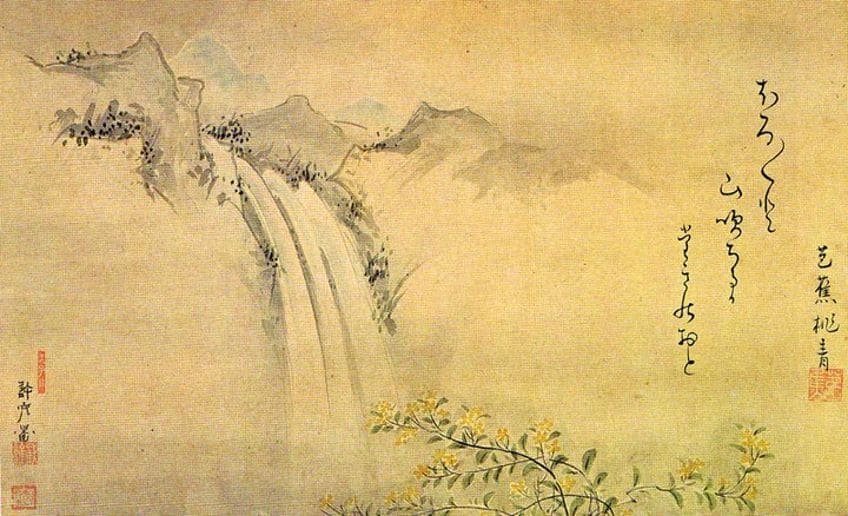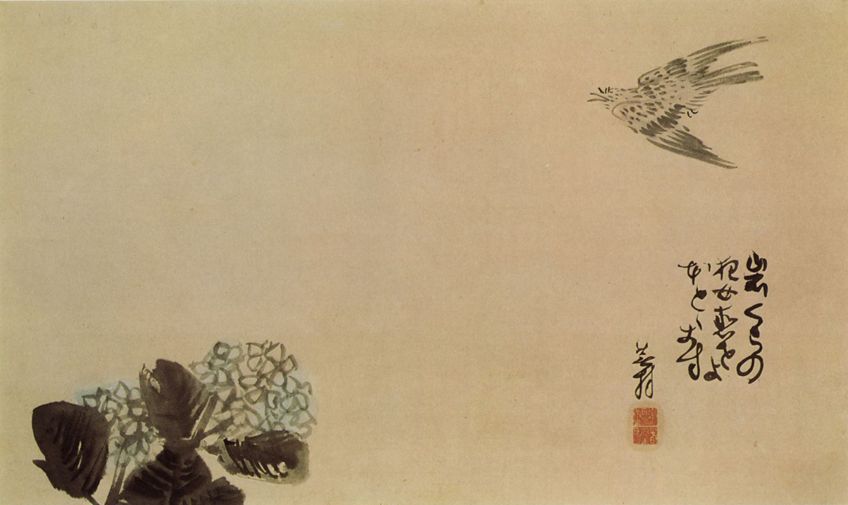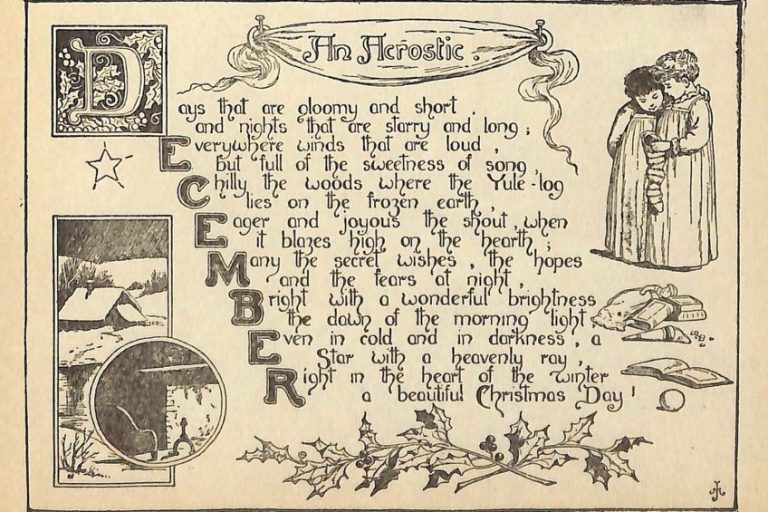Famous Haikus – Explore Traditional and Modern Poems
The haiku is a beloved poetic form that many consider to be a beautiful formal style. It is a short and sweet poetic style that many have persisted in their enjoyment of through the centuries. The form may have seen its origins in Japan, but it can now be found everywhere, and so it’s worth exploring this poetic form. We are going to examine ten famous haikus in the more traditional form as well as five in non-traditional forms to show how this type of poetry has spread and been adapted. If learning about haiku poetry is something that interests you, let’s get started and see what we can learn about it!
A Few Famous Haikus
Haikus are a form of short poetry. These short poems originated in Japan. While many forms of poetry do exist in the world, it’s quite unusual for a non-Western variety to become an immensely famous form in Western countries. The reasons that haiku poems have become famous in Western countries are likely multifaceted, but one of the easily understandable reasons is because of their brevity.
Haiku poetry is noted for its very particular form. It makes use of a specific syllable structure with the first and third lines using five syllables while the second line makes use of seven syllables. This means that, in total, instances of this poetry generally use three lines and a total of seventeen syllables. The focus on syllable count is especially notable in the Japanese language as it makes use of a syllabic alphabet, and so each symbol is based around a specific syllable.

The focus on syllables also means that rhyme is generally ignored when it comes to examples of haikus. These poems are also often noted for a focus on the natural world. While this is not a necessary component of haiku poetry, it is a notable element of the form that can often be seen when haikus are written. These poems are generally to the point and expressed language that is seen as easier to understand.
Haiku poetry would become popular in Western countries and some adaptations were even made to the traditional form. However, we are going to first focus on that more traditional way of examining the haiku as we examine a few famous haikus in the first section of this article.
After that, we should also have a look at those that don’t easily conform to the more traditional understanding of the haiku.
Traditional Haikus
When it comes to traditional haiku poems, we need to keep the concept of the syllable in mind. We have already mentioned the 5-7-5 structure of traditional examples of haikus, and that will be the case with the following haikus. However, there is an important note on translation to first keep in mind here. We are going to use ten instances of traditional haiku poetry in this section, but that does not actually mean that these famous haikus have the correct number of syllables in English.

When something is translated, rhyme, syllables, and all manner of other formal elements of the language can be changed. For instance, “tree” in English has one syllable, whereas its translation in French, “arbre”, has two syllables. The spelling is also entirely different so if there had once been a rhyme, it would no longer exist in the translation. The same can be said about the following famous haikus. Many of the poems below were originally in Japanese, and so the translations will not necessarily follow the correct syllable count. So, with those explanations done and dusted, let’s explore a few of these famous haikus!
The Old Pond (1686) by Matsuo Bashō
| Date Published | 1686 |
| Type of Poem | Traditional haiku |
| Syllable Structure | 5-7-5 |
| Topic | Frog |
An old silent pond
A frog jumps into the pond—
Splash! Silence again.
Matsuo Bashō is generally considered to be the best-known haiku poet of all time, and he is seen as one of the masters of the form. Many of his poems were inspired by his travels around Japan and wrote many of his most famous haikus about the natural world that he saw around him. This poem is one such example of haiku poetry focusing on the natural world. This famous haiku examines a simple scene. An old pond that is suddenly interrupted by the arrival of a frog.
The beauty of the poem comes from the contemplative silence broken by such a simple and wonderful thing.

A Caterpillar (17th Century) by Matsuo Bashō
| Date Published | 17th century |
| Type of Poem | Traditional haiku |
| Syllable Structure | 5-7-5 |
| Topic | Caterpillars |
A caterpillar,
this deep in fall –
still not a butterfly.
Seeing as Bashō established his fame by writing some of the most famous haiku poems, how about we have a look at a second haiku by Matsuo Bashō? As has already been stated, this poet is considered to be one of the great masters of the form, and this poem continues to show his wonderful talents. The simple statement of a lack of transformation so late in the year and what this might mean for this small caterpillar. Is this particular creature destined to never become a butterfly or is there still time for the one?
These are the kinds of questions a haiku like this may evoke in a reader.

Even More So (Between 1716 and 1784) by Yosa Buson
| Date Published | Between 1716 and 1784 |
| Type of Poem | Traditional haiku |
| Syllable Structure | 5-7-5 |
| Topic | Solitude |
Even more so
because of being alone
the moon is a friend.
Yosa Buson was a figure who was inspired by the work of Matsuo Bashō, and he also traveled throughout the countryside to search for inspiration for his poetry. He produced some of the most famous haikus during this period. He was also a painter. Those very same paintings would also go on to inspire the way he wrote. The moon is a constant companion. We can see it above us every night and even when we believe ourselves to be alone, we can take solace in the fact that this celestial body is forever above us.
The poem encourages a more spiritual view of the natural world.

A Poppy Blooms (Between 1760 and 1849) by Katsushika Hokusai
| Date Published | Between 1760 and 1849 |
| Type of Poem | Traditional haiku |
| Syllable Structure | 5-7-5 |
| Topic | Writing |
I write, erase, rewrite
Erase again, and then
A poppy blooms.
Katsushika Hokusai was a very famous ukiyo-e painter and printmaker. He is likely one of the most famous Japanese artists, although he is better known under the name Hokusai. While he is generally best known for his visual art, he also produced a number of famous haikus over the course of his life. This particular poem is a metatextual piece that examines the process of writing itself. It also uses the metaphor of the blooming of a poppy to represent what comes from this long and arduous process.
The comparison of writing and the natural world comes to the fore in this particular haiku.

Mosquito (Between 1763 and 1828) by Kobayashi Issa
| Date Published | Between 1763 and 1828 |
| Type of Poem | Traditional haiku |
| Syllable Structure | 5-7-5 |
| Topic | Mosquitos |
From deep inside
the pretty flower –
a mosquito
Kobayashi Issa was both a Japanese poet and a Buddhist priest, and he produced some of the most famous haikus in his life. His life was often filled with tragedy, such as the death of his wife and children, failed subsequent marriages, and the destruction of his home. Through it all, he would produce some lovely haiku poems. Continuing with the natural imagery so common in haiku poetry, this haiku focuses on a single moment in time in which a mosquito was deep inside a flower. We associate mosquitos with their blood-sucking tendencies, but male mosquitos cannot drink blood at all, and so they can often be found consuming nectar.
This uncommon sight for a human is likely a fascinating one to see.
The West Wind (1899) by R.M. Hansard
| Date Published | 1899 |
| Type of Poem | Traditional haiku |
| Syllable Structure | 5-7-5 |
| Topic | Wind |
The west wind whispered,
And touched the eyelids of spring:
Her eyes, Primroses.
R.M. Hansard is not a famous poet and the only real thing he is known for is this poem. The poem was a submission to the very first haiku competition in Britain. The poem is traditional in terms of its structure, but little is known about the person who wrote it in the first place. This famous haiku in English makes use of a personification of the wind, and it shows how the wind brings with it the spring and flowers.
The use of natural imagery is used here as it is common in many famous haikus.
Winter (Late-19th Century) by Masaoka Shiki
| Date Published | Late-19th century |
| Type of Poem | Traditional haiku |
| Syllable Structure | 5-7-5 |
| Topic | Winter |
The desolation of winter;
passing through a small hamlet,
a dog barks.
Masaoka Shiki was considered to be one of the major figures in the development of the modern haiku in Japan. He was a prolific author throughout his life and has even come to be seen as one of the great masters of the form. The image of winter, and its powerful movement through the world, and how it affects humans and the creatures that live alongside them is a potent one.
The poem simply describes this, but the image is one that becomes immediately understandable to all who have experienced a harsh winter.

Hokku (1919) by Yone Noguchi
| Date Published | 1919 |
| Type of Poem | Traditional haiku |
| Syllable Structure | 5-7-5 |
| Topic | Nature |
But the march to life –
Break song to sing the new song!
Clouds leap, flowers bloom.
Yonejirō Noguchi was a famous Japanese writer who became known in the English-speaking world as the first Japanese-born writer to publish his work directly in the English language. He resided and worked in both the United States and Japan, and he wrote in both of these countries. Many of his most famous haikus would go on to inspire figures in the Modernist movement. This poem makes use of the image of a march to life that is born out of music. The music is connected to the natural world and directly compares it to clouds and flowers.
The association between the man-made music of the world and the natural world is one that does often persist to this day.

Haiku [for you] (1998) by Sonia Sanchez
| Date Published | 1998 |
| Type of Poem | Traditional haiku |
| Syllable Structure | 5-7-5 |
| Topic | Love |
love between us is
speech and breath. loving you is
a long river running.
Sonia Sanchez is an American poet and academic, and she would go on to be considered one of the central figures in the Black Arts Movement. She wrote many poems, plays, children’s books, and essays over her long career. Haikus were only one of the types of poems that she wrote, and this particular one is one of the best-known in the English language. This poem takes a more Western sensibility in its use of a full stop halfway through a poem, but the two thoughts that make up this famous haiku are focused on love.
However, love is compared to the natural world. It is seen as a river that flows ever on.

Koi (2013) by Jennifer Wong
| Date Published | 2013 |
| Type of Poem | Traditional haiku |
| Syllable Structure | 5-7-5 |
| Topic | Koi fish |
Among heart-shaped leaves
the white fish gleams, red tail.
Soft lotuses sleep.
Jennifer Wong is a contemporary writer based in Hong Kong. She studied English literature and would later go on to work for the government and in the private sector in a public relations role. Her work is often an expression of her understanding of the cultures of both Western and Eastern perspectives. This poem, while very recent in comparison to the others that have been discussed, is still concerned with the natural world. It portrays the image of a koi fish as the creature swims between leaves in their home.
The image of the fish is portrayed as beautiful and serene.
Alternative Haikus
The haiku form has become a very famous one, and it is beloved by many people. This has led to a few alterations to the form over the years. Some people have taken the haiku’s general concept of specific syllable counts and brevity and morphed it into something different. The following examples of haikus are alternate forms. They do not conform to the traditions found in the poems above, and so some may argue that they are not haikus at all. However, they are still worth examining. So, let’s do just that!

In a Station of the Metro (1913) by Ezra Pound
| Date Published | 1913 |
| Type of Poem | Non-standard haiku |
| Variation | Two lines |
| Topic | Faces in the crowd |
The apparition of these faces in the crowd;
Petals on a wet, black bough.
Ezra Pound was one of the leading figures in Modernism and an important figure in the development of 20th-century literature. He would be an influence and friend of many Modernists, such as T.S. Eliot. He also came to appreciate the haiku format, and produced some of the best-known Western instances of this form. Ezra Pound often played with the supposed conventions of poetry, and this is no different. He used a two-line structure for this particular poem and focused on the image of people in a crowd. These people are then compared to flower petals.
The natural imagery draw of the haiku persisted despite the changes to the form.

Haiku from American Haiku (1959) by Jack Kerouac
| Date Published | 1959 |
| Type of Poem | Non-standard haiku |
| Variation | Incorrect syllable count (2-4-2) |
| Topic | Winter |
frozen
in the birdbath
A leaf
Jack Kerouac was a major figure in the Beat Generation. He is likely best known for his novel, On the Road (1957), but he also became interested in the haiku format and what it could mean for poetry. And so, he produced a number of the most famous haikus in the English language. His Beat sensibilities often carried over to this work too. This particular American haiku, while using an incorrect syllable count in terms of the traditional view, has a similar perspective to many haiku poems in that it focuses on a snapshot of the natural world. In this case, a single leaf that has frozen in a birdbath in winter.
A piece of nature preserved in the ice.

Haiku from the window-washer’s pail (1963) by Cor van den Heuvel
| Date Published | 1963 |
| Type of Poem | Non-standard haiku |
| Variation | One line |
| Topic | Cold |
Tundra
Cor van den Heuvel is an American haiku poet and editor. He learned about this poetic form in the 1950s and has since become one of the central figures in the development of American haiku poetry. This particular poem is one that some may object to being seen as a haiku at all, but it does often depend on personal perspective. This poem is made up of a single word. This word, for those unfamiliar, refers to a type of ecosystem found in the Arctic. It’s very windy, has no trees, and sees little rainfall. The image this poem conjures is a simple one, but why is it used? Why is there nothing but a solitary word in this poem?
That is up to you to interpret.
Haiku from the old tin roof (1976) by Marlene Mountain
| Date Published | 1976 |
| Type of Poem | Non-standard haiku |
| Variation | Five lines |
| Topic | Nature |
beneath
leaf mold
stone
cool
stone
Marlene Mountain was an American poet and artist. She would become one of the best-known English practitioners of the haiku format. She was even associated with the American Haiku Archives for part of her life and there is also a haiku contest named after her. This particular haiku is one that goes against the traditional rules of the form.
The format may be incorrect in terms of the traditional view of the haiku, but the view of the natural world is still maintained as it focuses on the simple image of a cool stone on the ground that is hidden under the leaves.
Birds Punctuate the Days (2022) by Joyce Clement
| Date Published | 2022 |
| Type of Poem | Non-standard haiku |
| Variation | Incorrect syllable count (3-7-2) |
| Topic | Birds |
Period
One blue egg all summer long
Now gone
Joyce Clement is a well-known American poet who has become known for producing haiku poems. However, she does write in the English language and this particular poem does not actually follow the correct structure as the syllable count is entirely wrong. The syllables are arranged as 3-7-2. However, regardless of the unusual format, the poem still continues the tradition of nature imagery. It shows a nest, with a single blue egg, and it’s now gone.
The continuation of life persists all over the world, and the nests of birds and the homes of humans are often the same in this regard.
A Note on the Plural of Haiku
Before we conclude our look at some famous haikus in both the traditional and non-traditional sense of the term, let’s talk about the word itself. We have already spoken about translation issues when it comes to the haiku and syllable counts, but what about the name of the form itself? The word is, obviously, Japanese in origin, and because it’s Japanese, it is not actually correct to use “haikus” with the plural “s” as Japanese does not use the “s” letter to signify plural.
However, this does not mean that it’s incorrect.

You see when a word is taken from one language into another, it adopts the rules of the language it joins. For this reason, “haikus” is not incorrect because it is now an English word. It may have been taken from another language, but it has joined this one. This is why it is actually perfectly correct to use “haiku” or “haikus” for the plural form of this type of poetry. Both are correct.
There are many examples of haikus out there, and many of them are absolutely fantastic pieces of literature. Their brevity, ability to focus solely on one topic, and their capacity to cut straight to the point have made them some of the most beloved types of poetry in the world. Today, we examined ten traditional and five alternative haiku poems to show the breadth of what this poetic form can accomplish, and, hopefully, it has been illuminating. However if you are so inclined, why not try your own hand at writing a haiku or two?
Frequently Asked Questions
What Is a Haiku?
A haiku is a very specific type of poetry that uses a particular syllable count. The traditional form of this poetry uses three lines, and those lines have syllable counts as follows: five, seven, and five again. This tells us that there are a total of seventeen syllables in a haiku. This brevity allows for them to be straightforward and, as a result, they are written to be very clear in what they want to say.
What Is a Non-Standard Haiku?
While the standard haiku makes use of its specific three-line structure, the form has been adapted in certain ways by others. While there could be arguments to be made about whether or not other forms technically classify as haikus, they have been called such. These alternative haikus are generally still short but might entirely eschew syllable counts or they may be intentionally one or two lines in length. They have been labeled as haikus even if some may disagree with that term being applied to them.
Who Is the Most Famous Haiku Writer?
Matsuo Bashō is generally considered to be the most famous haiku poet. He was also the most famous poet of the Edo period in Japan. He spent much of his life wandering the Japanese countryside searching for inspiration for his poetry, and many of his haiku poems can still be found on monuments around the country. He is often considered to be a national poet of the country and an important figure in the development of haiku poetry in general.
Does a Haiku Have to Be Japanese?
A haiku does not need to be Japanese. While the traditional haiku poems were written in Japanese, and the form does come from the country, it has since transitioned into an international poetic form. Many have written haiku poems around the world, but many of the most famous haikus continue to be those written by some of the great Japanese masters of the form.
What Is the Correct Plural of Haiku?
In Japanese, there is no need for singular and plural forms of words, and so haiku is both singular and plural. This can also be the case in English, as it can be used as is for either. However, as the word has entered the English language, it is also correct to use an s at the end of the word to signify that it is a plural. This is because when a word enters a language, it takes on the rules of that language.
Justin van Huyssteen is a freelance writer, novelist, and academic originally from Cape Town, South Africa. At present, he has a bachelor’s degree in English and literary theory and an honor’s degree in literary theory. He is currently working towards his master’s degree in literary theory with a focus on animal studies, critical theory, and semiotics within literature. As a novelist and freelancer, he often writes under the pen name L.C. Lupus.
Justin’s preferred literary movements include modern and postmodern literature with literary fiction and genre fiction like sci-fi, post-apocalyptic, and horror being of particular interest. His academia extends to his interest in prose and narratology. He enjoys analyzing a variety of mediums through a literary lens, such as graphic novels, film, and video games.
Justin is working for artincontext.org as an author and content writer since 2022. He is responsible for all blog posts about architecture, literature and poetry.
Learn more about Justin van Huyssteen and the Art in Context Team.
Cite this Article
Justin, van Huyssteen, “Famous Haikus – Explore Traditional and Modern Poems.” Art in Context. November 15, 2023. URL: https://artincontext.org/famous-haikus/
van Huyssteen, J. (2023, 15 November). Famous Haikus – Explore Traditional and Modern Poems. Art in Context. https://artincontext.org/famous-haikus/
van Huyssteen, Justin. “Famous Haikus – Explore Traditional and Modern Poems.” Art in Context, November 15, 2023. https://artincontext.org/famous-haikus/.









